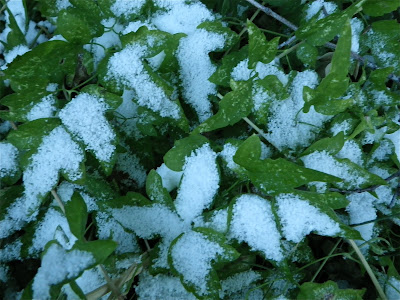12/10/13: The US Forest Service will be enforcing access restrictions to Tar Creek soon. TC is part of the Condor Sanctuary established as critical habitat to this endangered bird and other wildlife. Epic numbers of visitors, and the trash and graffiti they have left behind, has led to the acknowledgment by the Forest Service that access must be curtailed and enforced. For more information on the impending action visit: Tar Creek Closure.
On the way down to the bottom I collected a number of bottle caps and cigarette butts, which are just the kind of stuff that wildlife (namely CA Condors) tend to investigate by eating. I was disappointed to see my first signs of spray-paint graffiti in Tar Creek. Some asshole had tagged a rock in the unsanctioned campsite adjacent to the Land of the Lost pools. I mean, it didn't come as a surprise to me, but I'm disappointed.
I grew up in Santa Paula so I'm familiar with the type of low-life scum of a certain gender and heritage that have so little respect for anyone or anything that they feel compelled to act as if it all belongs to them. These are the (insert racial generalization)'s that tag and leave beer cans and diapers at the Punchbowls up SP Canyon. Pisses me off somthin' fierce.
As for Tar itself, the falls are still running surprisingly well, which is merely a testament to last year's stellar rainfall totals. Mine were the first prints descending below the Land of the Lost since the most recent rains greater than 1 week ago.This, I thought, was a good sign. At least fewer people are traveling all the way to the bottom falls, or maybe I spoke too soon. On the way out I passed two parties: one had 5 rickety seniors with ropes and a bunch of canyoneering shit, obviously on a quest to finally unravel the mystery of Ponce De Leon's lost Fountain of Youth, the others were a few teen boys in sneakers. Eight people (not counting myself) on a Friday. Crazy. This is exactly the kind of thing that gets the USFS interested in restricting or denying access, that and stuff like trash, dead condors, grafitti, and more than 10 helicopter rescues in the canyon every summer. Mark my words, one day the government is going to shut this place down. It's just too sensitive an ecosystem to support the amount and type of traffic that visits that canyon.
As for the day itself, I had a good time. I saw myself a wooly coyote on Goodenough Rd and spotted the nice red-tail hawk that graces the top of this post. No big birds today, however. I love this place. Let's al ltry to save it.

























































